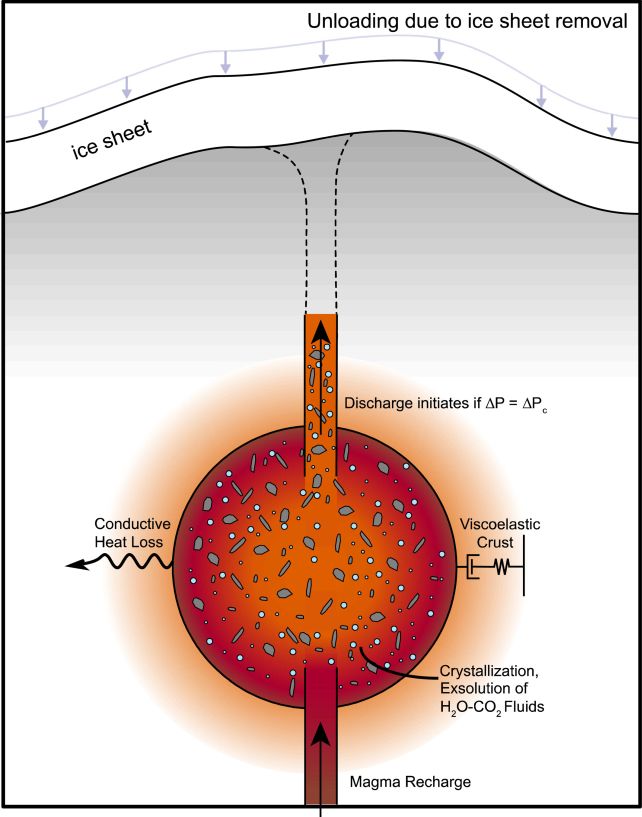Deep under the frozen desert of western Antarctica, a hidden danger slumbers.
Lurking beneath the massive, 1–2 kilometer-thick slab of frozen water lies an active volcanic rift, seething away in the deep, in the darkness.
If the ice sheet melts sufficiently, the changes in stress and pressure on Earth's crust, and the magma chambers therein, could generate a feedback loop of volcanism that accelerates the ice melt, and the world's problems with it.
In recent years, it has become painfully evident that Earth is losing ice. Greenland's ice is shrinking, at a rate of 270 billion tons per year. And Antarctica is losing its ice, too, at a rate of some 150 billion tons per year, and growing greener in the process.
Assessing the rate of sea level rise from this ongoing depletion as average global temperatures continue to smash records, year after year, is vital to predict the ongoing changes our world will experience, and help devise ways to mitigate them.
These predictions rely at least partially on being able to predict the stability of the West Antarctic Ice Sheet, the smaller half of Antarctica to the west of the Transantarctic Mountains. As the smaller portion of the Antarctic continent, the ice sheet is particularly vulnerable to collapse – yet its underlying volcanic rift is rarely taken into account when modeling its future.
Our planet, however, has given us evidence that the rift could be a significant problem. Analysis of past deglaciation – the loss of ice sheets and glaciers – shows an accompanying rise in volcanic activity. And this, researchers say, can be directly attributed to the loss of ice.
Led by geochemist Allie Coonin of Brown University in the US, a team of researchers conducted thousands of simulations of the effects of melting ice on the underlying ice sheet.
Their results showed that, as ice melts, pressure on the crust is eased, allowing magma trapped in chambers therein to expand, placing more pressure on the rock walls around them. This can result in increased eruptions.
In addition, as the magma cools, the reduced weight from the melting ice can allow water and carbon dioxide dissolved in the magma to form gas bubbles – an additional pressure within the confined space that can increase the chances of eruption.
This process can not only speed up the timing of eruptions that would have taken much longer had the ice not melted; the released heat due to volcanic activity can accelerate ice melting, in turn triggering more eruptions.
 A schematic of the magma chamber model. (Coonin et al., Geochem. Geophys., 2024)
A schematic of the magma chamber model. (Coonin et al., Geochem. Geophys., 2024)Subglacial volcanic eruptions would not have the same effect on the surface as an eruption in the open air, trapped as they would be under the ice. But they can sneakily erode and degrade the ice from below, accelerating the effects of ice loss, over hundreds to thousands of years.
And there would be nothing we could do about it: once the feedback loop initiates, it would be out of our control. This means more work needs to be done to understand how this mechanism works, and how to include it in our models of Earth's future.
"Even long after ice unloading ceases, the compressibility of the magma remains permanently elevated due to the reduction in lithostatic pressure, resulting in larger eruptions compounding over the long-term trajectory of the magma chamber. The additional heat associated with such unloading-triggered eruptions is currently unaccounted for in models of the West Antarctic Ice Sheet," the researchers write in their paper.
"In the interest of elucidating hazards both in terms of fieldwork in West Antarctica and global sea-level rise, more work must be done to determine whether other glacio-volcanic feedbacks will amplify modern ice loss."
The research was published in November 2024 in Geochemistry, Geophysics, Geosystems.
H/T: Eos

.jpg) 2 hours ago
1
2 hours ago
1
 English (US)
English (US)